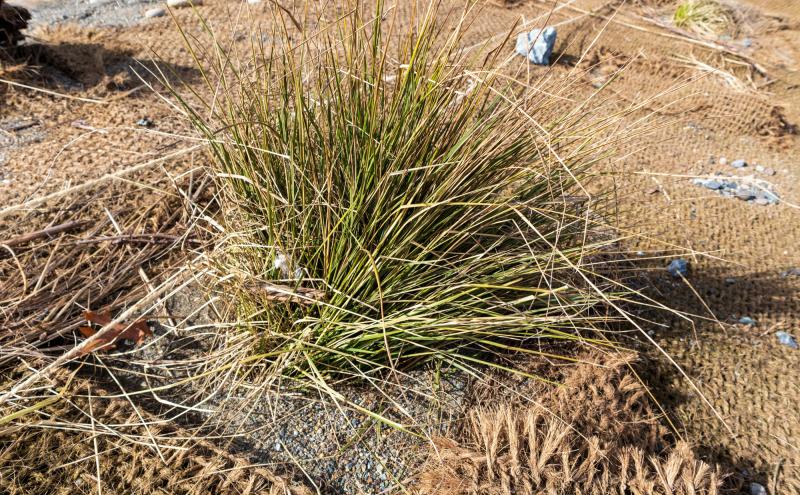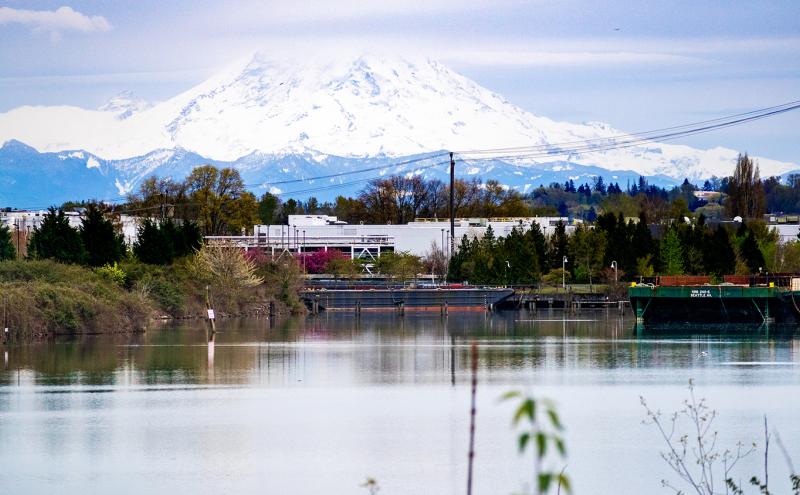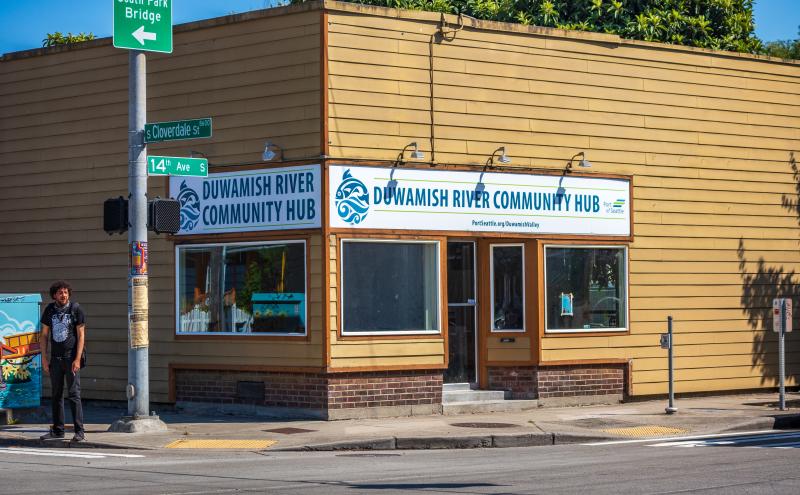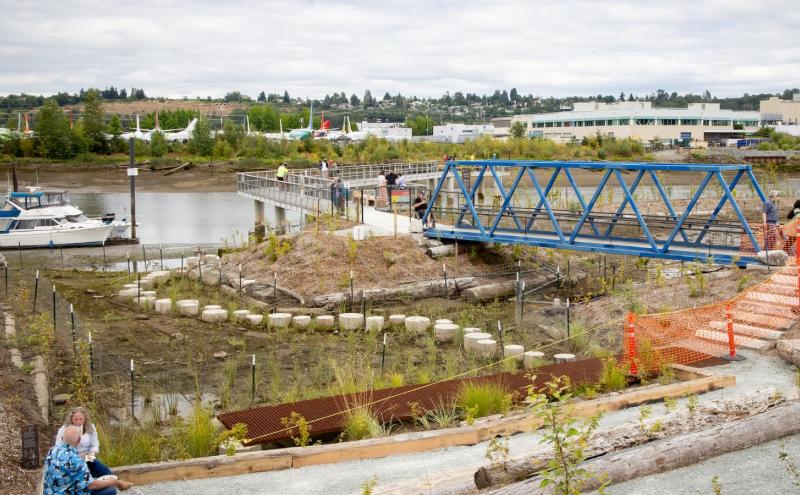
Originally published July 16, 2023
The Duwamish River People’s Park celebrates its one year anniversary! Completed in July 2022, the park is the end product of more than 100 years of industrial contamination and an example of engagement with the local community to reflect the true history and remedy the struggles of the last century.
Here’s a look at the history and future of the park and what it took to get here.
Timeline
Past
The Duwamish River has been the center of the city’s industrial core since the early 1900s. More than a century of urbanization and industrial activity polluted the sediments in the Lower Duwamish Waterway.
Because of this industrial contamination, the river was designated a Superfund site by the U.S. Environmental Protection Agency (EPA) in 2001 and was and was one of the early action sites for the Lower Duwamish Waterway Superfund cleanup.
In 2001, The Lower Duwamish Waterway Group (LDWG), a public-private partnership between The Boeing Company, the City of Seattle, King County, and the Port of Seattle, launched a study to determine the extent of the contamination and the risks to people and wildlife. The group is committed to advancing the EPA-led cleanup of the Lower Duwamish.
In 2007, the Duwamish Valley community advocated for the Port to pursue a higher standard of cleanup that would transform the site into a public use park and habitat reserve.
In 2015, under the guidance of the EPA, the Port finished cleanup of the shoreline uplands and in-water sediment
The city cleaned up the toxic contamination in the surrounding neighborhood in 2016
In 2020, the Port and the Seattle Parks Foundation launched a park naming campaign and received more than 400 submissions of names that reflected the cultural, historical, and environmental significance of the region and its community
Grand opening
In July 2022, the parked opened with a grand celebration!
“We have turned the page on a chapter of history that was defined by disregard for Seattle’s only river and environmental racism towards the communities who live here,” said Commissioner Hamdi Mohamed. "We are in a new era defined by our vision to center economic justice and environmental stewardship here on the Duwamish River.”
After two decades of clean up, the Port of Seattle and Duwamish Valley community came together on July 16 to celebrate the completion of the Duwamish River People’s Park and Shoreline Habitat. Formerly known as Terminal 117 park, the area is the largest habitat restoration site along the Duwamish River in a generation. More than 55,000 tons of industrial fill, soil, and sediments were removed from the site.
Port of Seattle Commissioners Hamdi Mohamed and Toshiko Hasegawa attended the event. Green Jobs Youth Trainees Faith Villalobos and Fernando Buitron, Paulina Lopez of the Duwamish River Community Coalition, Bunthay Cheam of the Port Community Action Team, and Port of Seattle environmental department leaders spoke during the ceremony.
The project, the largest habitat restoration project in the Duwamish River Estuary, includes forested buffer, emergent marsh, mudflat, shallow subtidal, and deep subtidal areas along nearly half a mile of Duwamish River shoreline.
Watch a video of the tide rising at the park
Key features of the park include:
- 14 acres of restored emergent marsh, mudflat, and riparian habitat
- 2,050 linear feet of shallow and deep subtidal shoreline habitat
- More than 3,210 feet of restored shoreline
- 20,000 native plants
- Walking path
- A boat launch and community access to the river for hand-carried boats
- View of the Duwamish River and the shoreline habitat from an elevated walkway
- Interpretive signage
- Public art designed by the community
- Osprey nesting boxes
- Mountain views
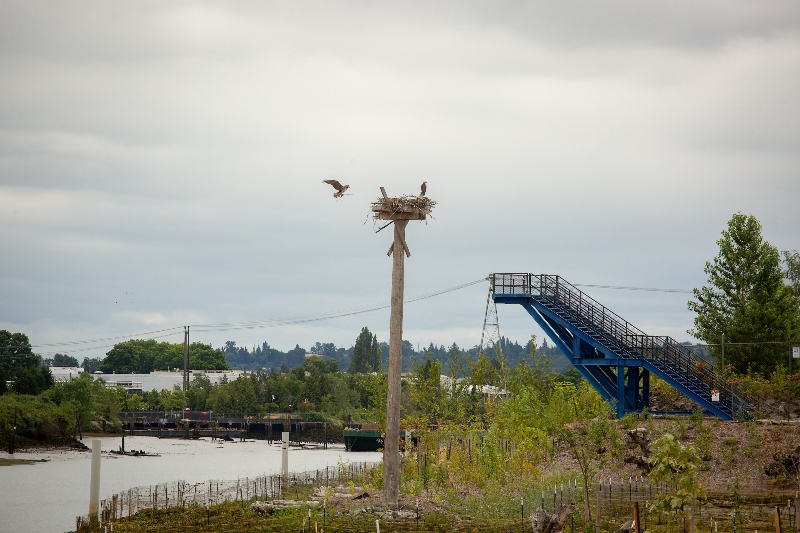
2022 was a three-year milestone for Resolution 3767, the Duwamish Valley Community Benefits Commitment, the first community-led environmental justice policy at a port. The work is guided by a community advisory group made up of South Park and Georgetown neighbors, called the Port Community Action Team (PCAT).
Dre Avila of Georgetown, a member of the PCAT, remarks
“This partnership between the Port and the Duwamish Valley has no expiration date – we are neighbors for life. Because of that it’s very important that we take the time to establish strong foundations to make the relationship sustainable, accountable, and fruitful for the long-term benefit of the community.”
Present
One year later, the park flourishes as an example of community collaboration and environmental justice and has had a long-lasting impact on the surrounding community.
The Port leased a building in the heart of the South Park Business District to open the Duwamish River Community Hub, an economic development center to promote workforce development in the community.
The Duwamish River Green Jobs Program addresses the lack of racial and ethnic diversity in the environmental sector, in light of the fact that “disproportionate impact of environmental hazards on communities of color [and that] people of color poll higher than whites in support for environmental issues,” as identified in the Green 2.0 Report.
Future
Port of Seattle Commissioners Toshiko Hasegawa and Hamdi Mohamed reflected on the future of this 14-acre site.
“The most important aspect of this park’s future are the youth, our tomorrow — who are here with us today,” said Commissioner Hasegawa. “This park will continue to serve as a learning lab for young environmentalists mastering skills and science necessary to save our planet. Green jobs learned here are essential for making the changes we have been fighting for: cleaner industrial practices, healthier environment, and more economic opportunities.”
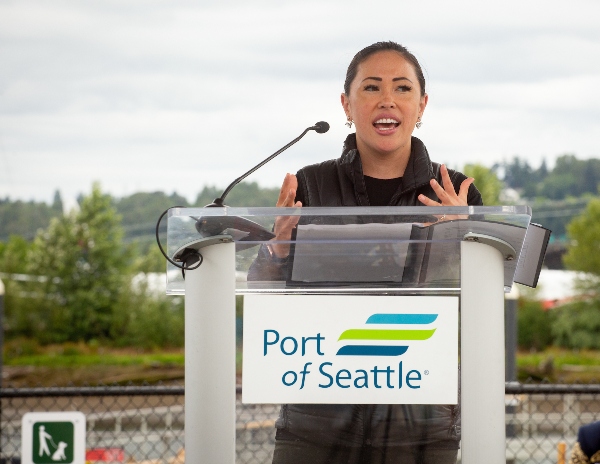
Environmental impacts
Mitigation banks
The Duwamish River People’s Park and Shoreline Habitat is the first habitat project built as part of the mitigation bank that will allow third parties to invest in Port habitat projects via purchase of mitigation credits. The revenue generated by mitigation credit sales will fund additional habitat restoration projects in the Green-Duwamish Watershed and Elliott Bay.
Learn more about mitigation banks
Salmon habitat
The new habitat will help support the recovery of the endangered Southern Resident Orca population by significantly increasing the essential habitat for abundant and healthy Chinook salmon. The restoration creates valuable off-channel habitat in the marine-freshwater transition zone, enhancing a high-priority migratory corridor for Chinook salmon. In this habitat, out-migrating juveniles can seek refuge while acclimating to saltwater environments before navigating into Puget Sound.
Native plants
The park includes three planting zones filled with native plants: intertidal zone, transitional shoreline marsh, and riparian vegetation. These zones create the perfect habitat for juvenile salmon as they begin their journey to sea and ultimately help feed Southern Resident orcas and other Puget Sound wildlife.
Learn more about the planting zones that create a healthy ecosystem
Home for recycled materials
The park contains many reused and repurposed materials that had a previous life around Seattle. For example, repurposed cruise gangways serve as elevated walkways for views of the river and the wildlife.
Read about the recycled materials in the park
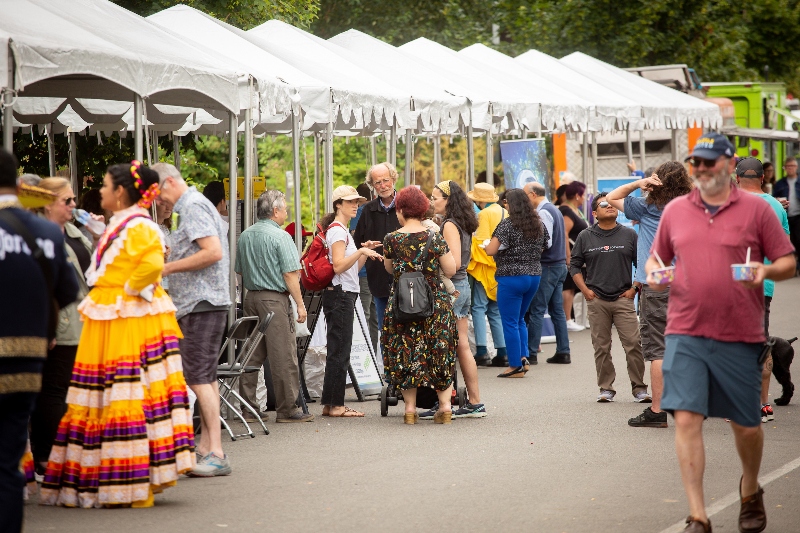
Community benefits
The park is an important resource for the neighborhood now and into the future and
- Supports environmental justice in the Duwamish Valley neighborhood
- Promotes community and youth engagement in green jobs and trainings
- Offers a Community Hub, a center for local government resources and community events
For more information on the Duwamish People’s Park and its history, along with translated materials in Spanish, Vietnamese, Khmer, and Somali, visit the People’s Park page.

